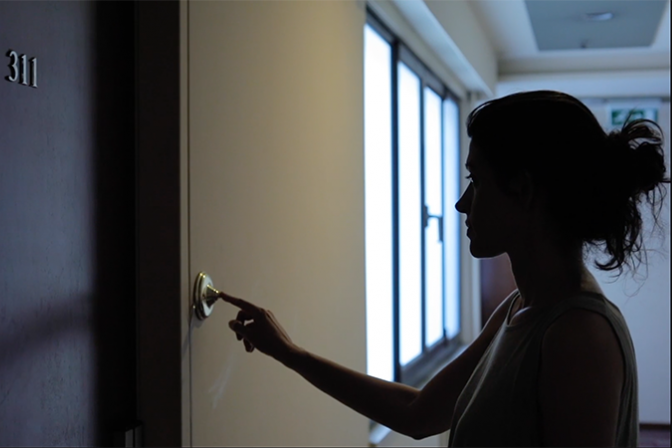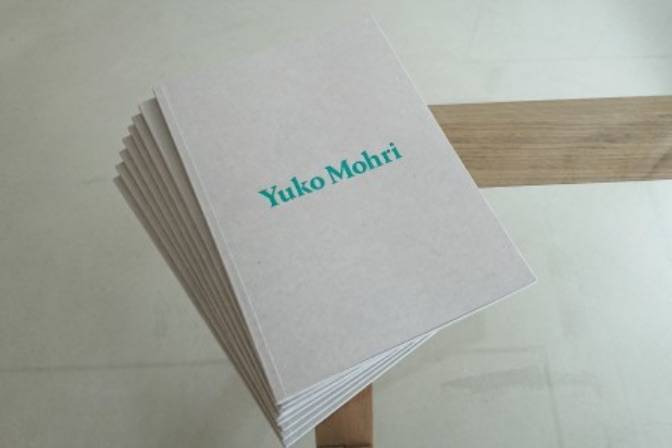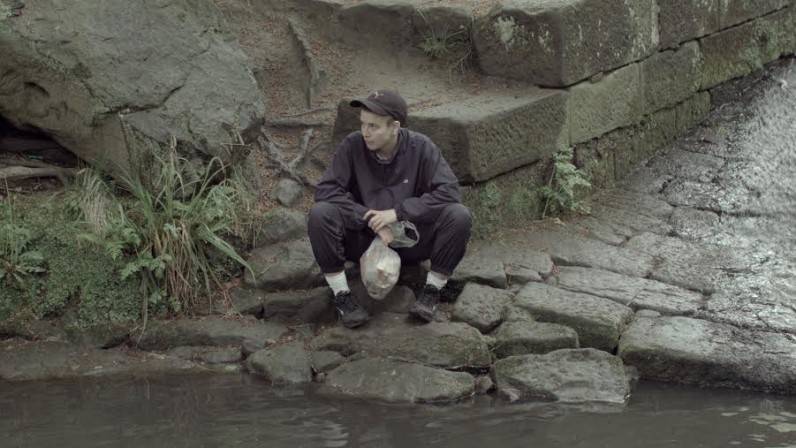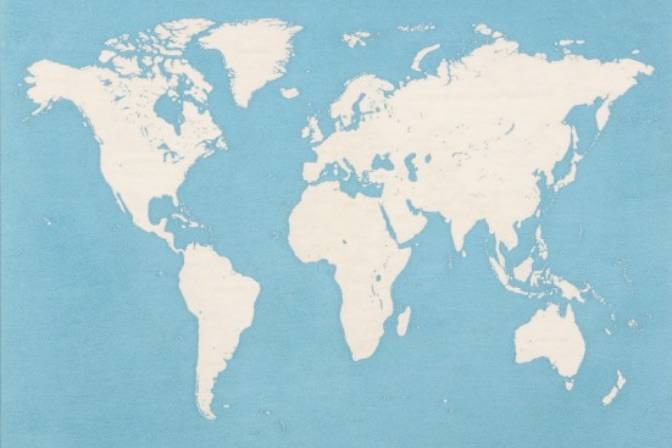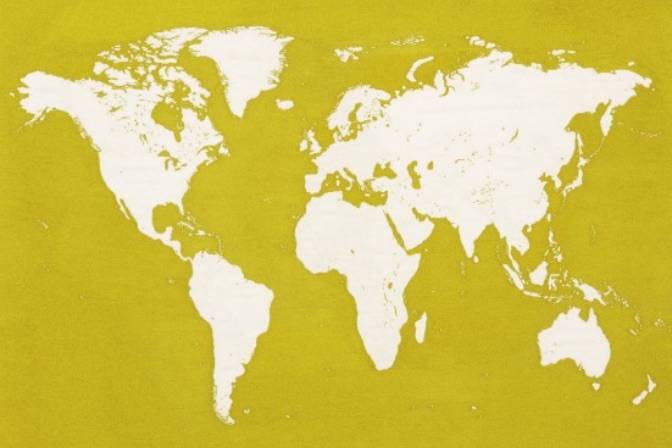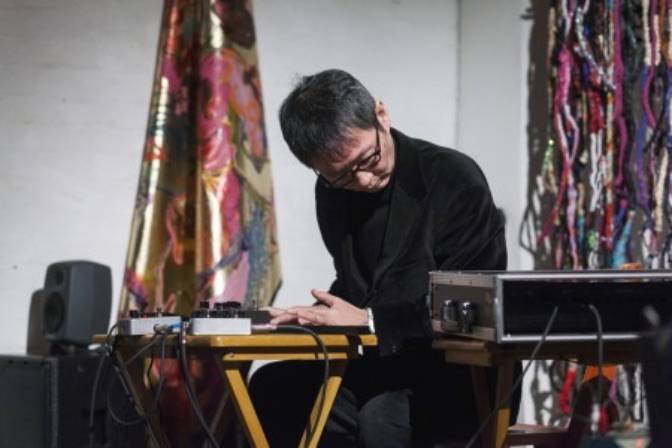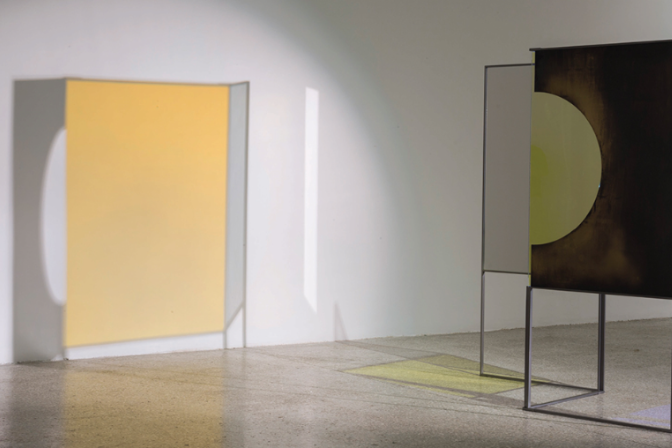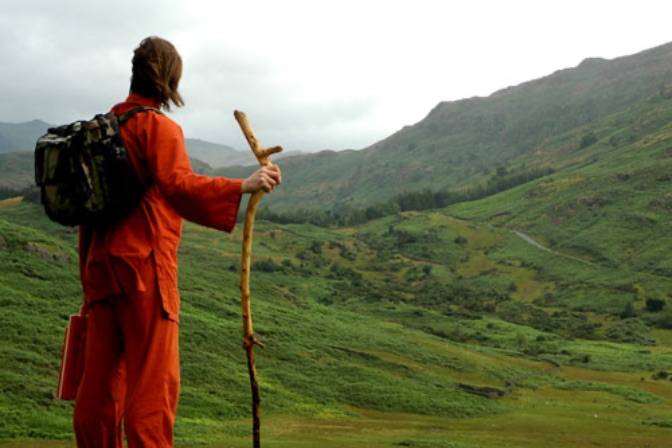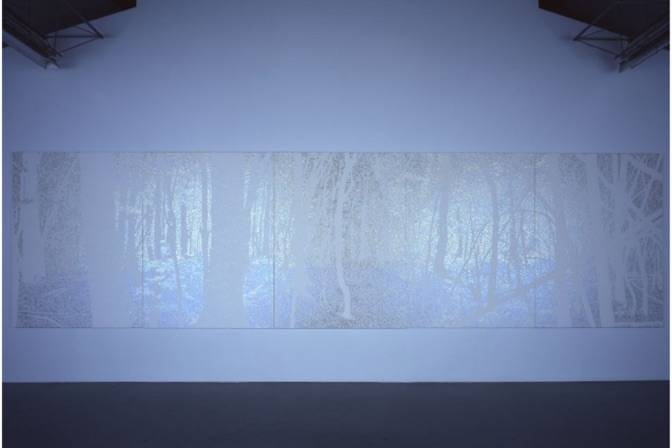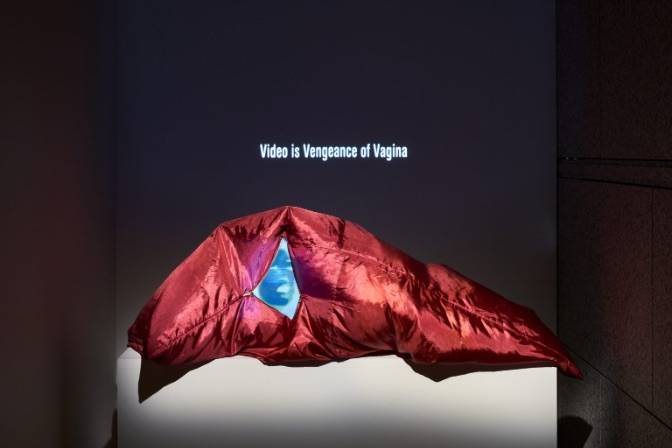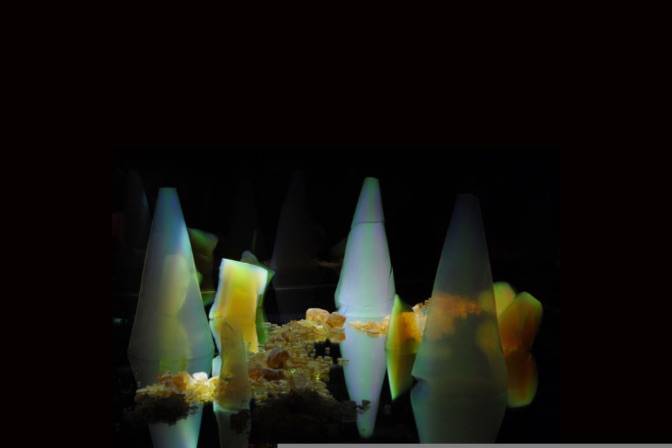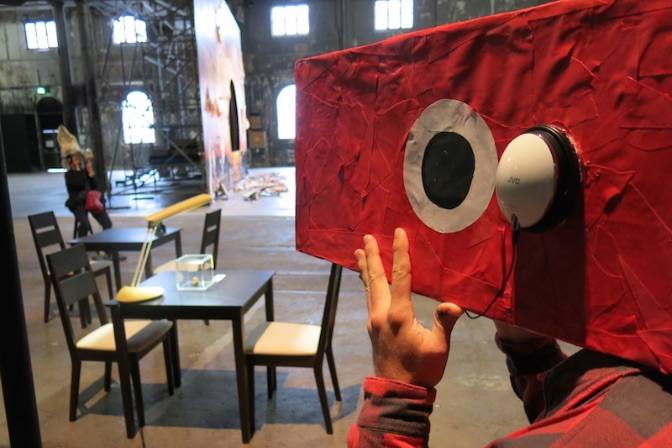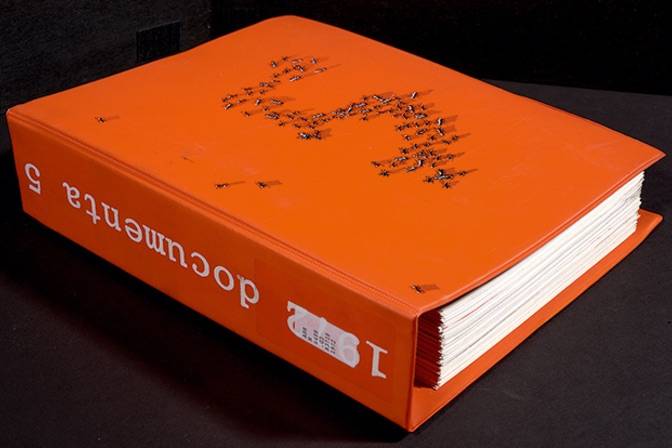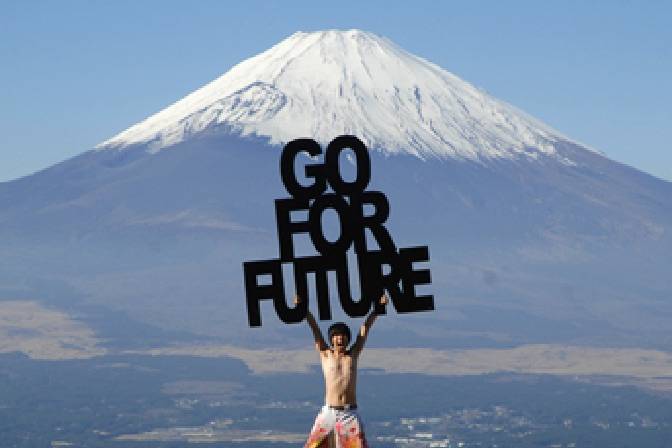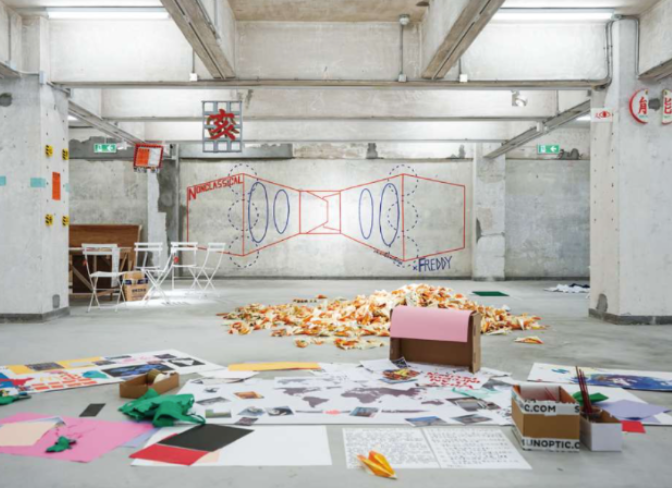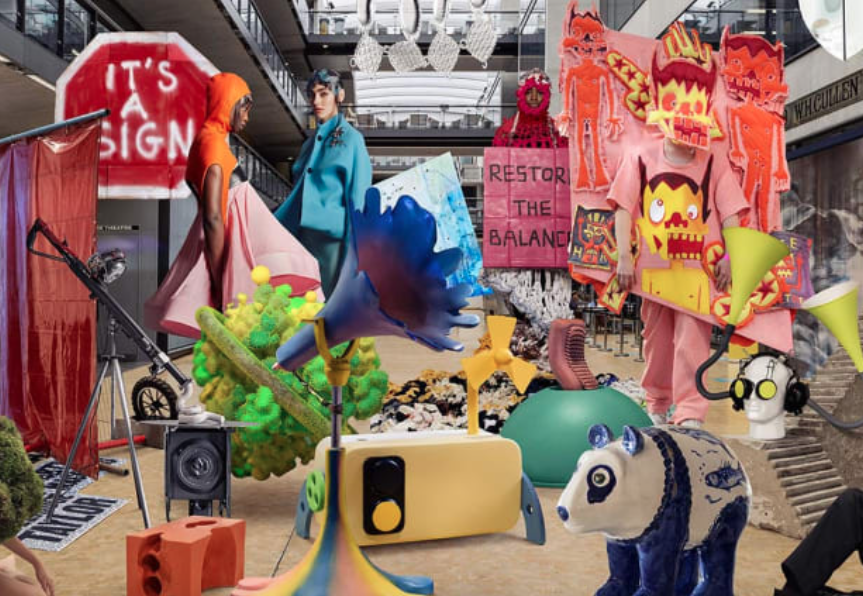Curatorial Talks & Events
Talk by Leah Gordon, Co-founder of the Ghetto Biennale
ArtLink, Inishowen, Ireland
In 2023 the Atis Rezistans | Ghetto Biennale exhibition at St Kunigundis Church at documenta fifteen was awarded the Exhibition of the Year award by AICA Germany.
In this recent talk introduced and moderated by Keith Whittle, artist, curator, writer and co-founder of the Ghetto Biennale, Haiti, Leah Gordon gave a talk about the biennale, originally conceived to expose social, racial, class and geographical immobility.
Part of a programme of talks; Lewis Biggs, Founding Director of Liverpool Biennial, Shubigi Rao, Curator of Kochi-Muziris Biennale 2022-23, Fram Kitagawa, General Director of Echigo-Tsumari Art Triennale and Leah Gordon, Co-founder of the Ghetto Biennale exploring Bienalisation and related developments in the art world, such as the emergence of global curatorial discourse, the vanishing boundaries between art and non-art categories, and the rise of contemporary art from non-Western countries such as Africa, Asia, and Latin America, all prompting an explosion of periodic international exhibitions. How the biennial model grew as the world became increasingly interdependent through rapid connections across vast distances that communication networks and information technology enabled, international economic exchanges relying on money markets, banking systems, and stock exchanges further facilitated globalisation.
An outcome of which has been the growth of biennials and international art fairs, art from emerging markets received increasing attention as stakeholders and investors searched the globe for untapped talent, and the curator as arbiter and emblem of taste in the global art world. During the talk, Gordon discussed one of the original strap lines of the first Ghetto Biennale: “What happens when first-world art rubs up against third-world art? Does it bleed?” The line is a transmutation of a quote from a book about the maquiladoras in Juárez, Mexico. The original quote, by Gloria Anzaldúa, states, “The U.S.- Mexican border es una herida abierta (is an open wound) where the Third World grates against the First and bleeds.” (Anzaldúa 1987, 3). She explored what new practices, processes and relationships could emerge from these, often uncomfortable, entanglements.
Read >> Ghetto Biennale
Read >> Leah Gordon
Watch >> Ghetto Biennale
Watch >> Atis Rezistans | Ghetto Biennale, documenta 2022
Watch >> The Sculptors of Grand Rue
The 2nd Biennale was held in December 2011. Yet while the Ghetto Biennale was conceived to expose social, racial, class and geographical immobility, it seemed to have upheld these class inertias within its structural core. Gordon addresses the contradictions and challenges posed by the event, and how subsequent Ghetto Biennales sought to confront them. Leah Gordon also talked about the current political crisis and insecurity in Haiti and how the Ghetto Biennale has responded to the situation. Concluding by reflecting on how the Ghetto Biennale produce meaningful discussion about sameness and difference in an allegedly de-centred art world that transcends different models of ghettoisation?
After the success of Atis Rezistans | Ghetto Biennale at documenta fifteen, and the subsequent AICA.de award for best exhibition of 2022, and finally the recent triumph at RISING festival, Melbourne the Ghetto Biennale team held the 8th Ghetto Biennale in 2024 from mid-Feb until early March in the city of Jacmel, Haiti. Extremely disappointed not to be returning to the original site but due to the continuing insecurity in Port-au-Prince, especially close to the Grand Rue/Portail Léogâne area, the Ghetto Biennale team made the decision to move the event, for this year only, to Jacmel. There were undoubtably considerable differences from the original location of Grand Rue, and they hope to embrace these through discovering other Haitian artists, venues, and art forms.
Leah Gordon (born Ellesmere Port, UK) is an artist, curator, and writer. Her work explores the intervolved and intersectional histories of the Caribbean plantation system, the Trans-Atlantic Slave Trade, the Enclosure Acts and the creation of the British working-class. In the 1980s she wrote lyrics, sang, and played for a feminist folk punk band. Gordon’s film and photographic work has been exhibited internationally including the Museum of Contemporary Art, Sydney; the Dak’art Biennale; the National Portrait Gallery, UK and the Norton Museum of Art, Florida. She is the co-director of the Ghetto Biennale in Port-au-Prince, Haiti; was a curator for the Haitian Pavilion at the 54th Venice Biennale; was the co-curator of ‘Kafou: Haiti, History & Art’ at Nottingham Contemporary, UK; and was the co-curator of ‘PÒTOPRENS: The Urban Artists of Port-au-Prince’ at Pioneer Works, NYC in 2018 and MOCA, Miami in 2019. In 2015 Leah Gordon was the recipient of the Colección Patricia Phelps de Cisneros Travel Award for Central America and the Caribbean. In 2022, her award-winning feature-length documentary Kanaval: A People’s History of Haiti in Six Chapters was broadcast in selected cinemas and on BBC 4’s Arena. In 2022, Gordon also exhibited in and curated the Atis Rezistans | Ghetto Biennale exhibition at St Kunigundis Church at documenta fifteen, Kassel; her work showed at MOCA North, Miami; Power Plant Gallery, Duke University, NC, USA, and Haus der Kulturen der Welt, Berlin, Germany.
Curated by Keith Whittle in partnership with ArtLink and hosted by Void Gallery
Talk by Fram Kitagawa, director of Echigo-Tsumari Triennale introduced and moderated by Keith Whittle
ArtLink, Inishowen, Ireland
In the past two decades, Japan has seen a flowering of startlingly ambitious contemporary art festivals offering a response to the many crises the country faces today, ecological, social and economic.
The groundbreaking Echigo-Tsumari Art Triennale is pivotal to this uniquely creative social movement. One of the largest art festivals in the world held once every three years and located in the vast rural area of Satoyama, Echigo-Tsumari region in Niigata Prefecture. Echigo-Tsumari Art Triennale offers an opportunity to reconsider our way of life in the age of Globalisation and the Anthropocene.
In this recent talk introduced and moderated by Keith Whittle, Fram Kitagawa, director of Echigo-Tsumari Triennale and visionary art producer and curator discussed the concepts behind his life’s work, Echigo-Tsumari Art Triennale, and its impact on contemporary art and society in Japan.
Echigo-Tsumari Art Triennale includes artworks by internationally renowned artists such as Marina Abramović, James Turrell, Christian Boltanski, Ilya and Emilia Kabakov, Antony Gormley, Leandro Erlich, Esther Stocker, Yayoi Kusama, Tadashi Kawamata, Kōhei Nawa, Lee Bul, MAD Architects, and Dominique Perrault.
Born in Niigata Prefecture in 1946. Following his graduation from Tokyo University of the Arts, Fram Kitagawa organized various exhibitions that introduced to Japan works of art that at the time were not well known, including the Antoni Gaudi exhibition that traveled to 13 cities in 1978-1979 and the Apartheid Non! International Art Festival, originally organized as Art Against Apartheid by UNESCO, that was shown at 194 venues throughout Japan in 1988-1990. Kitagawa has received high praise for his involvement in activities related to community development, such as his lead role in the planning of the Faret Tachikawa Art Project and the cultural activities he oversees at the Daikanyama Hillside Terrace.
Read >> Echigo-Tsumari Art Triennale
Read >> Art Place Japan: Echigo-Tsumari Art Triennale and the Vision to Reconnect Art and Nature
Watch >> Keynote by Fram Kitagawa
Watch >> Echigo-Tsumari Art Triennale
He has served as the general director of the Echigo-Tsumari Art Triennale since 2000, and has made a major contribution to the development of the region through art. He has also served as the general director of the Setouchi Triennale, the Northern Alps Art Festival, the Oku-Noto Triennale and Ichihara Art x Mix, Boso Satoyama International Art Festival.
He is the recipient of many awards, including the Ordre des Arts et des Lettres from the French Republic, the Order of Culture from the Republic of Poland, the 2006 Japanese Education Minister’s Award for Art (in the field of art promotion), and the Order of Australia: Honorary Member (AO) in the General Division (2012). He was awarded the Japanese Medal of Honor with Purple Ribbon in 2016, the Asahi Prize in 2017 and Person of Cultural Merit in 2018. His book on Echigo-Tsumari Triennale has been translated and published in USA, China, Taiwan, and Korea. The English edition is titled “Art Place Japan: Echigo-Tsumari Art Triennale and the Vision to Reconnect Art and Nature” (Princeton Architectural Press). His co-authored book on Setouchi Triennale (with Soichiro Fukutake) has been translated and published in China and Taiwan.
Japanese to English translation by Akemi Nomoto
Special thanks to Rei Maeda, Art Front Gallery
Curated by Keith Whittle in partnership with ArtLink
Biennial Fever: A Brief History of Large-Scale Perennial Exhibitions of Contemporary Art
Keynote by Keith Whittle, ArtLink, Inishowen, Ireland
Launching a programme of talks; Lewis Biggs, Founding Director of Liverpool Biennial, Shubigi Rao, Curator of Kochi-Muziris Biennale 2022-23, Fram Kitagawa, General Director of Echigo-Tsumari Art Triennale and Leah Gordon, Co-founder of the Ghetto Biennale. Keith Whittle explored Bienalisation and related developments in the art world, such as the emergence of global curatorial discourse, the vanishing boundaries between art and non-art categories, and the rise of contemporary art from non-Western countries such as Africa, Asia, and Latin America, all prompting an explosion of periodic international exhibitions. How the biennial model grew as the world became increasingly interdependent through rapid connections across vast distances that communication networks and information technology enabled, international economic exchanges relying on money markets, banking systems, and stock exchanges further facilitated globalisation. Along with a series of interrelated developments in the art world, such as the emergence of global curatorial discourse, the vanishing boundaries between art and non-art categories, and the rise of contemporary art from non-Western countries such as Africa, Asia, and Latin America, all prompting an explosion of periodic international exhibitions.
From the Venice Biennale 1895, the founding of the Sao Paulo Biennial in 1951, the Paris Biennial in 1959, and the Sydney Biennial in 1973, Biennials reflect the transformation of the art world, where art fairs grew in importance, art journals rapidly increased in number, curating courses became institutionalised, and contemporary art started to attract the general public. Biennials launched in seemingly global peripheries, such as the Havana Biennale founded in 1984, increased their presence in the art world in the 1990s and 2000s, when Shanghai, Moscow, Liverpool, Bucharest, Taipei, Lyon, Johannesburg, and Berlin among over 300 cities that have added biennial contemporary art exhibitions to their cultural profiles.
Keynote oganised in partnership with ArtLink
Artist Talks & Publication Launch
Mari Katayama in conversation with Simon Baker
The Royal Society of Arts, London
White Rainbow and Japan Foundation presented an artist talk by Mari Katayama, to coincide with her solo show at White Rainbow. Katayama discussed her artistic process, touching on how her physical difficulty has informed her work and influenced her body image.The talk was followed by a conversation with Simon Baker, director of the Maison Européenne de la Photographie, Paris.
Daisuke Ida in conversation with Keith Whittle
Arts Chiyoda presented an in conversation between Daisuke Ida and Keith Whittle, to coincide with his solo show at 3331. Ida discussed his artistic process, the aura of the artwork, The Gates of Hell (French: La Porte de l’Enfer) a monumental sculptural group work by French artist Auguste Rodin that depicts a scene from the Inferno, the first section of Dante Alighieri’s Divine Comedy. Ida’s reproduction of this iconic work and the process of its reproduction, plurality of possible copies, reactivates the object reproduced.
Organised by 3331 Arts Chiyoda
Art that Speaks: Meiro Koizumi
Royal Society of Arts (Durham Street Auditorium), London
White Rainbow and Japan Foundation presented an artist talk by Meiro Koizumi, to coincide with his solo show at White Rainbow. Meiro Koizumi will introduce his representative works to date, his most recent work showcased at the gallery, and his challenging attitude towards the subject.The talk was followed by conversation with Charlotte Knaup.
Taro Izumi in Conversation
Jerwood Space, London
White Rainbow and Japan Foundation presented an artist talk by Taro Izumi, to coincide with his solo exhibition at White Rainbow.Taro was in conversation with ArtReview Editor-in-chief Mark Rappolt, expanding on the themes behind his exhibition and previous works.
Aki Sasamoto ‘Clothes Line’ performance and catalogue launch
White Rainbow, London
A performance lecture by artist Aki Sasamoto, and the launch of a new catalogue to accompany her exhibition ‘Clothes Line’ at White Rainbow.
Yuko Mohri and Jason Waite in conversation
White Rainbow, LondonTo coincide with Yuko Mohri’s solo exhibition Voluta at Camden Arts Centre, White Rainbow hosted a talk between the independent curator Jason Waite and Yuko Mohri. Mohri and Waite discussed their work and reflect on the social imaginaries of contemporary Japan, with particular reference to socially-engaged and participatory art practices following the Fukushima Nuclear Disaster in 2011.
White Rainbow presented Yuko Mohri’s first UK solo exhibition in 2017.
Chim↑Pom: White Rainbow and ArtReview Asia presented Chim↑Pom in conversation.
A special screening programme and conversation with Chim↑Pom members.Tokyo-based artist collective Chim↑Pom are known for their sharp social critique and provocative actions in public space and in contested territories around the world, including the Fukushima Nuclear Zone, Japan, and the U.S.-Mexico border.The group discussed their practice with reference to their current solo exhibition at White Rainbow, alongside a newly selected screening of the group’s performance works.
Chikako Yamashiro ‘Shapeshifter’ Catalogue Launch
White Rainbow, London
Launch event of a new monograph on Chikako Yamashiro, to coincide with her current solo exhibition, Shapeshifter.The catalogue includes a newly commissioned essay by Isabella Maidment and an artist response by Claire Potter.
Yuko Mohri: Catalogue Launch
White Rainbow is delighted to launch the first Yuko Mohri catalogue with a drinks reception and talk between Yuko Mohri and Richard Wentworth. Mohri’s catalogue features Moré Moré [Leaky] – her recent exhibition at White Rainbow, as well as related texts and previous works.
Closing Event: ‘Overlay’ | Book Launch and Performance
White Rainbow, London
Closing event of ‘Overlay’, an exhibition of new works by four young artists — and a historic work by a celebrated older artist — gathered in response to the 10th Tokyo Biennale, 1970. Artists: Cathy Haynes, Nancy Holt, Hannah Lees, Zoë Paul, Claire Potter. White Rainbow was delighted to announce the launch of a new publication containing an extended conversation between the artists and the exhibition’s curator, Jeremy Millar, as well as reference and installation photographs.In conjunction, Claire Potter performed a newly written text developed for the event.‘Like an idiot on a moor’, expands on the themes from Potter’s exhibited work ‘Cast Metal Nut’ and puts them in correspondence with Nancy Holt’s ‘Trail Markers’.
Fitz Lates | Performance by Patrick Coyle and Jenny Moore
White Rainbow, London
To coincide with the Fitzrovia Lates, White Rainbow was pleased to announce a collaborative performance between Patrick Coyle and Jenny Moore, in response to White Rainbow’s exhibition, Index II, by Shigeo Anzaï. Coyle and Moore staged an improvised performance in response to a 1984 performance in Tokyo by Joseph Beuys and Nam June Paik, as documented by Anzaï.The original performance, Coyote III with piano variation, was a duet between the two artists. Nam June Paik improvised on piano while Beuys conducted a vocal performance that varied from animalistic grunting to sophisticated sound poetry.
White Rainbow was also delighted to announce the publication of a new monograph on Shigeo Anzaï. Titled Index, the book contextualises Anzaï’s career as a celebrated recorder of contemporary art.
Common Thread: Artist Talk by Satoru Aoyama
ICA (Institute of Contemporary Arts) | Studio, The Mall, London
Building up layer upon layer of intricate coloured thread, Japanese contemporary artist Satoru Aoyama creates photo-realistic interpretations of his subject matter entirely constructed through the art of embroidery. Like pixels on a monitor, Aoyama reproduces modern media images through an assemblage of fine stitches to disguise his craft and any evidence that his efforts are handmade and thus tricking the eye. After graduating from university in both London and Chicago, Aoyama explores and re-values craft art forms and technology rendered archaic in modern art with his highly original ideas and methods.In conjunction with his solo exhibition at White Rainbow in London, Aoyama gave an illustrated talk about his medium and method.
He discussed the relationship between the life of the modern world and technology, issues of gender and labour which are motifs in the foreground of his pieces, and how the creativity of his work invokes the sensibility of human beings.
Following the talk, Aoyama was joined in conversation by Dr Caterina Albano, Reader in Visual Culture and Science at Central Saint Martins, University of the Arts London.
Fitzrovia Lates | Ken Ikeda music performance
White Rainbow, London
30 minutes performance in collaboration with the Japanese musician Ken Ikeda, starting from 7pm.White Rainbow was pleased to announce a music performance by Ken Ikeda for ‘Fitzrovia Lates’.Ken Ikeda is a composer born in Tokyo (1964) – currently living in New York. He has exhibited sound art and visual installations around the world. He often collaborates with artists, such as the painter Tadanoori Yokoo and artists Mariko Mori and Hiroshi Sugimoto. He has also composed and recorded for the filmmaker David Lynch.
The performance accompanied the exhibition ‘Division of Labour’ by Satoru Aoyama, which presented his series of embroideries titled Map of the World (in reference to the Italian artist Alighiero Boetti’s Mappa del Mondo, 1989).
Film Without Film: Shimurabros in conversation with Keith Whittle
Central Saint Martins, University of the Arts London
SHIMURAbros is a brother-sister duo consisting of Yuka Shimura and brother Kentaro Shimura. Researchers at Studio Olafur Eliasson incorporate elements of sculpture, installation and avant-garde filmmaking techniques in their work. Their practice explores the history of moving images approached from a fundamentally different perspective. One that extends film beyond its two-dimensional limits through intricate installations and playful re-working of cinematic language.
The talk highlighted SHIMURAbros film and moving image installations, focusing on the formalistic qualities and contexts at play. Exploring the role technology and cinematic history have on the aesthetic and conceptual approach the artists have to their work in terms of research and exhibition.
Talk presented in partnership with The Japan Foundation and Central Saint Martins, University of the Arts London, home to the British Artists ‘Film & Video Study Collection which holds a large amount of material for academic research in artists’ moving images.
Child of The Atom: David Blandy in conversation with Keith Whittle
Create London, The Rose Lipman Building, EAST, London
Part of Frieze London VIP events 2013 and programmed to coincide with the major solo exhibition Anjin 1600: Edo Wonderpark by British artist David Blandy, this in conversation with Keith Whittle explored the artists’ practice and his most recent work, ANJIN 1600 alongside previous works such as Child of The Atom.
David Blandy has established his terrain through a series of investigations into the cultural forces that inform and influence him, ranging from his love of hip-hop and soul to computer games and manga. Blandy works with the image in the digital world, from the YouTube tutorial and music videos to television series, anime and the narrative sections of computer games; highlighting our relationship with popular culture and investigating what makes us who we are. Within each work he deconstructs the form, placing himself as the alienated subject in a prefabricated cultural archetype.
In conversation presented at The Rose Lipman Building in partnership with East London arts agency, Create London
Daisuke Ohba: The Light Field, talk and in conversation with Keith Whittle
The Daiwa Anglo-Japanese Foundation, London
This talk coincided with the first solo exhibition in London, Japanese artist Daisuke Ohba showcased his unique ‘light field’ paintings, achieved through the use of iridescent pearl paint to produce continual transformations, image shifts, and colour transitions, as the light varies or as the viewer moves. By developing this relationship with the viewer, Ohba has explored new possibilities in pictorial space.
Organised by The Daiwa Anglo-Japanese Foundation, London
Mirrored Lenses: A Brief History of Japanese Video and Media Art
Cornerhouse, Manchester
Programmed to coincide with The Conquest of Imperfection, the first major UK exhibition of Japanese media artist Masaki Fujihata’s acclaimed interactive work. This talk by Keith Whittle explores Japanese moving image and media art and the embrace and manipulation of technology across varying generations of Japanese artists.
With references ranging from the 1960s to today, the talk highlighted the work of key practitioners such as Shigeko Kubota and those artists whose work across performance, sculpture, and moving image conflates the physical world and its life on screen through new media and video installation.The talk accompanied the exhibition ‘The Conquest of Imperfection’ the first UK solo show of work by Japanese media artist Masaki Fujihata at Cornerhouse, Manchester.
Special thanks to Kathy Rae Huffman
Reflexions, Refractions, Inflexions: Matter and Light talk by Liliane Lijn
V&A South Kensington, London
The first of which by Liliane Lijn, pioneer and exponent of kinetic art who in her work has experimented with light, movement, words, film, liquids and industrial materials, presented the artists’ ideas and methodology behind her work. Lijn was born in New York and studied archaeology at the Sorbonne and Art History at the Ecole du Louvre, Paris (1958). Living in New York between 1961 and 1963, experimenting with fire and acids and working with light, poetry, movement and liquids, she rapidly established herself as a leading kinetic artist through many international exhibitions.
In 1966 she moved to London. She has featured in numerous group exhibitions in Britain, Europe and Japan, and is represented in important public and private collections in Britain, France, Australia and the United States. In November 2008, Lijn was one of the five artists featured in the BBC1 program Let There Be Light in the Imagine series presented by Alan Yentob. Recent highlights include exhibitions at Riflemaker Gallery, 2008 the ICA, London, and Poem Game, as part of the Serpentine Poetry Marathon curated by Hans Ulrich Obrist.Presented in partnership with the V&A South Kensington, Reflexions, Refractions, Inflexions: Matter and Light is a series of artist talks exploring light and matter.
Academic & Research Related Talks & Events
Art, Politics and Censorship in Japan and Beyond
The Sainsbury Institute, Norwich and Tokyo Geidai, Japan
Public decency cases and politically controversial artworks have recently raised a great deal of debate in Japan about an apparent drift towards censorship. Partly there have been cases of outside pressure (legal action against artists or public pressure on museums), but also there is the question of a distinctive national culture of self-censorship in which artists carefully align themselves to not cross critical or offensive lines. This one-day workshop and series of talk events brought together a group of specialist researchers, curators and artists whose work and engagement have confronted the difficult question of political expression in art, and who have been involved directly in some of these recent debates
List of Participants
Yoshitaka Mouri, Sociologist. Professor, Tokyo University of the Arts.
Miwako Tezuka, Consulting Curator, ARAKAWA-GINS Reversible Destiny Foundation. Former director of Japan Society Gallery, New York, and co-founder of PoNJA-GenKon.
Yumi Song, Artist, curator & writer. Curator of Arafudo Art Annual, Fukushima
Jason Waite, Curator. University of Oxford, PhD researcher. Co-curator of Don’t Follow The Wind project, an exhibition onsite in the Fukushima exclusion zone
Hiroki Yamamoto, Artist, and PhD researcher, Chelsea College of Arts, University of the Arts London.
Shino Yanai, Artist. Royal College of Art, MFA.
Yoi Kawakubo. Artist. Fellow of Japanese Agency of Cultural Affairs, London.
Kaori Homma, Artist, Associate Lecturer, Central St. Martins, University of the Arts London, and Founder of Art Action UK
Sharon Kinsella, Lecturer in Japanese Studies, University of Manchester. Author of Schoolgirls, Money and Rebellion in Japan (2013)
Barbara Geilhorn, Lecturer in Japanese Cultural Studies, Freie Universität Berlin. Co-editor of Fukushima and the Arts: Negotiating Nuclear Disaster (2017)
Keith Whittle, London-based academic, writer and curator. Sotheby’s Institute of Art and associate curator at White Rainbow Gallery, London
Meryl Doney, Curator, co-founder of Art Action UK
Caroline Fisher, Curator, Norwich University of the Arts, Gallery
Nell Croose Myhill, Learning Officer, Sainsbury Centre for Visual Arts, UEA
Toshio Watanabe, Professor for Japanese Arts and Cultural Heritage, SISJAC/UEA and Professor of History of Art and Design, Research Centre for Transnational Art, Identity and Nation (TrAIN), University of the Arts London
Eriko Tomizawa-Kay, Lecturer in Japanese Language, University of East Anglia
Ra Mason, Sasakawa Lecturer in International Relations and Japanese Foreign Policy, University of East Anglia
Stephanie Su, Robert and Lisa Sainsbury Fellow 2017-18, SISJAC
Amanda Kennell, Robert and Lisa Sainsbury Fellow 2017-18, SISJAC
Organised by Adrian Favell, Chair in Sociology and Social Theory, University of Leeds. Professorial Academic Associate, SISJAC
Kazz Morohashi, Artist/Designer, and Research, Planning and Public Relations Officer, SISJAC
Biennial Fever: An Anthology of Perennial International Exhibitions of Contemporary Art
Arts Initiative Tokyo (AIT), Tokyo, Japan
This four-part talk series by Keith Whittle for Arts Initiative Tokyo (AIT) as part of their Making Art Different (MAD) public lecture programme with background research and primary source materials kindly supported by Fundação Bienal de São Paulo, amongst other biennials and biennial foundations, explored current international art practices, and how since the 1990s we have witnessed an astonishing spread and proliferation of large-scale biennials and triennials. With no source agreeing on the exact number, there are currently thought to be a total number somewhere around three hundred around the world.
Special thanks to Bienal de São Paulo; The Ghetto Biennale; dOCUMENTA; Istanbul Biennial; Gwangju Biennial; Shanghai Biennial; Los Angeles Biennial; Kochi Biennial; Echigo-Tsumari Art Triennale; Kenpoku 2016; Manifesta; Yokohama Triennale; Sharjah Biennial; Setouchi International Art Festival; Venice Biennale; Havana Biennale and Biennale of Sydney.
Organised by Arts Initiative Tokyo (AIT) as part of their Making Art Different (MAD) public lecture programme.
One Place After Another: What Can Periodical International Exhibitions Actually Share?
Talk by Keith Whittle and discussion with Yuko Hasegawa, Lewis Biggs, Koki Tanaka and Mark Rappolt
The Japan Foundation, London
The last 15 years has seen a proliferation of large-scale international recurrent exhibitions of contemporary art across the globe. Looking at UK only, 2014 sees the presentation of the Liverpool Biennial, third Folkestone Triennial, and in Japan the fifth Yokohama Triennial and inaugural Sapporo International Art Festival. The latest edition to the growing number of periodic arts projects and international exhibitions of contemporary art, Sapporo triennial joins over 150 such projects currently operating internationally.
They often share similar objectives, practices and considerations, from curatorial and artistic strategies to political and economic agendas. Many of the exhibitions are focused on the encouragement of public engagement, in the local context to create a site of public participation that is not only periodical, but also permanent.Following the talk Keith Whittle was joined in discussion by and curators Yuko Hasegawa, Lewis Biggs, Koki Tanaka representative artist, Japan Pavilion, 55th International Art Exhibition, Venice Biennale, and Mark Rappolt, Editor-in-Chief of ArtReview.
Organised by The Japan Foundation, London
Intervening in Nature: Talk and in conversation between Kenji Kajiya and Keith Whittle
The Japan Foundation, London
This talk explored how during the first decade of the 21st century saw the expansion of non-museum-based exhibitions in Japan. Ranging from art initiatives run by artists to large-scale festivals in the countryside, they are often called ‘art projects’ to highlight the process of making artworks and exhibitions and the temporariness of their installations and venues. As we see the global increase of biennales and triennials, international art festivals such as Echigo-Tsumari Art Triennale in Niigata and Setouchi Triennale in Naoshima and other islands are arguably best understood in the context of such art projects in Japan.
Providing an insightful and historical account of art projects and their development to the present day, considering how these phenomena have been integrated or interacted with natural landscapes and society in Japan.
Organised by the The Japan Foundation, London
Post 3.11: What Can Art Do? – Talk by Ichiro Endo, Keith Whittle and Kaori Homma
The Japan Foundation, London
Post 3.11 is a series of talks with individuals who through art have in various ways been involved in supporting the victims of the 2011 earthquake and tsunami in the Tohoku region of Japan. Showcasing their activities, this talk series aims to examine how the role of the artist and art activities can be vital in such unprecedented situations, in spreading awareness and helping restore confidence among those affected, fundamentally questioning whether art has to have a practical social function.
For the first session in 2012, The Japan Foundation invited Ichiro Endo, a painter, performer and self-proclaimed ‘future artist’ famous for his artworks and activities, conveying a strong sense of ‘future’ through his eccentric artworks and activities which have been exhibited at venues including Art Tower Mito, BACC Bangkok and the Beppu Contemporary Art Festival.Evaluating his involvement in Tohoku, Endo was joined for a further discussion by Kaori Homma, UK based Japanese artist and Keith Whittle, curator and Japan Foundation Fellow, to explore the artist’s role including whether these activities have helped build new relationships between the artist and society.
Organised by The Japan Foundation, London
Art School Futures: What does it mean to be an Art Graduate in 2013?
Tokyo University of the Arts, Japan
This one-day international collaborative symposium established the relationship and later joint Global Art Joint Project of the Graduate School of Fine Arts, Tokyo University of the Arts, established in 2015, in collaboration with the world’s top art institutions: the École Nationale Supérieure des Beaux-Arts de Paris; Central Saint Martins, University of the Arts London; and the School of Art Institute of Chicago.
Written by Keith Whittle and co-organised with Tokyo University of the Arts, Painting Department, brought staff, students and graduates from two of the world’s leading Fine Art Programmes; Central Saint Martins, University of the Arts London, UK and Tokyo University of the Arts, Japan, together with established British and Japanese artists, curators and art project managers to discuss support for emergent art practice, new and recent graduate artists’ work, ideas, connections and careers within the contemporary art world.Highlighting regional, national and international contexts and situations; Japan-UK, and drawing upon personal accounts based on the professional experience of individual guest speakers, including graduates of both schools.
Special thanks to Professor Sakaguchi, Tokyo University of the Arts, Painting Department, Mark Dunhill, Dean, Central Saint Martins, Professor Graham Ellard and the International Office, Central Saint Martins, University of the Arts, London.



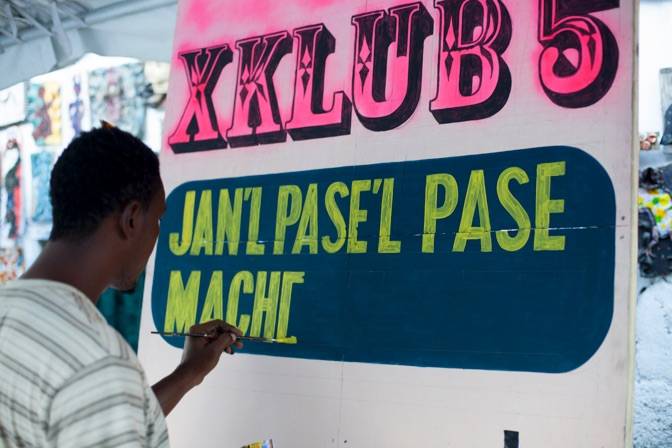
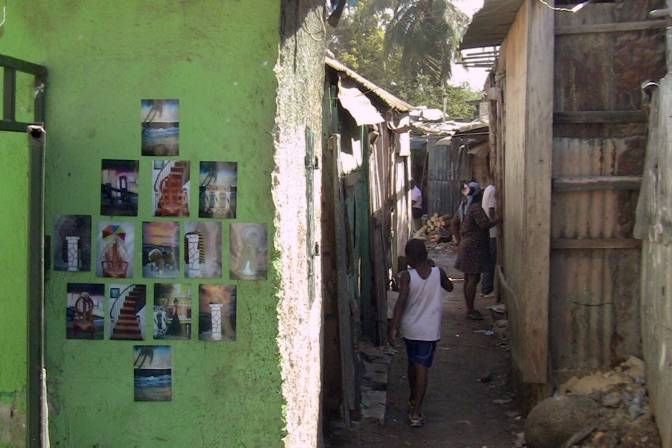
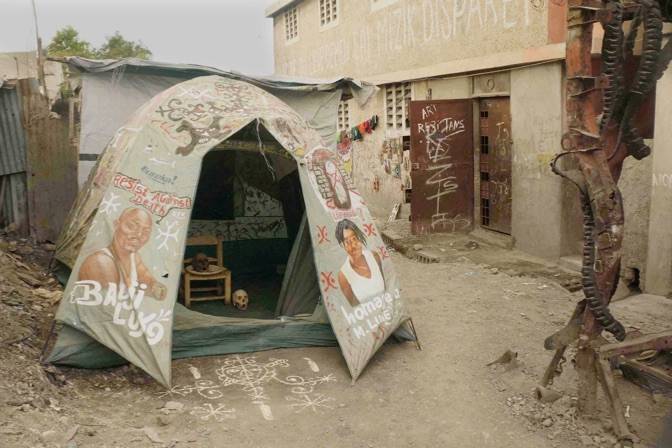

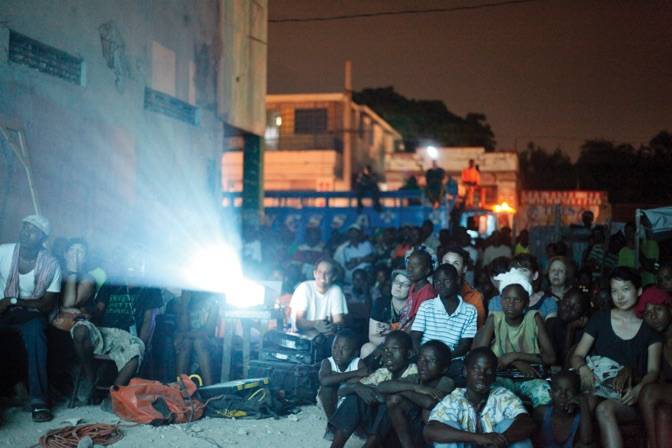

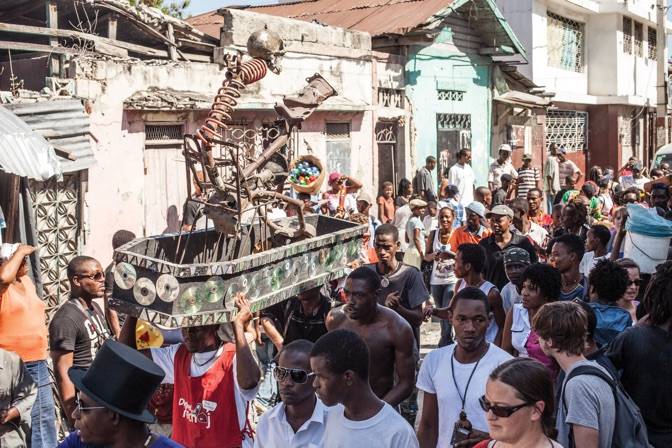
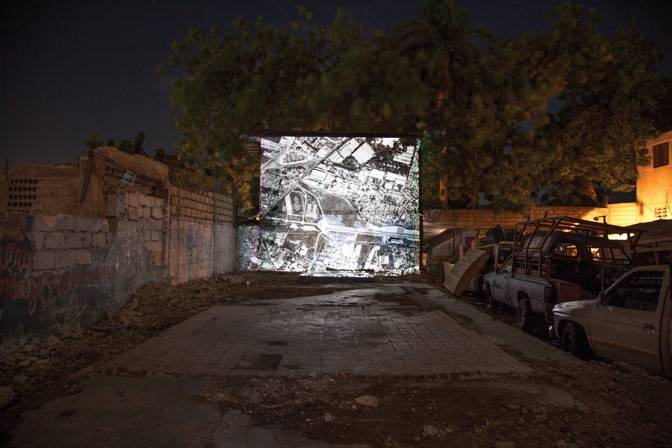
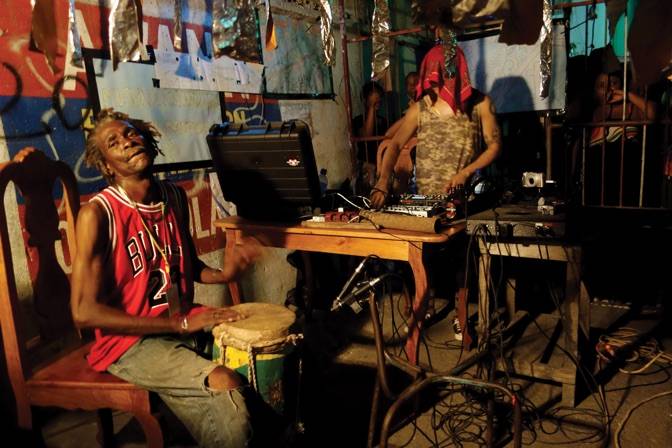
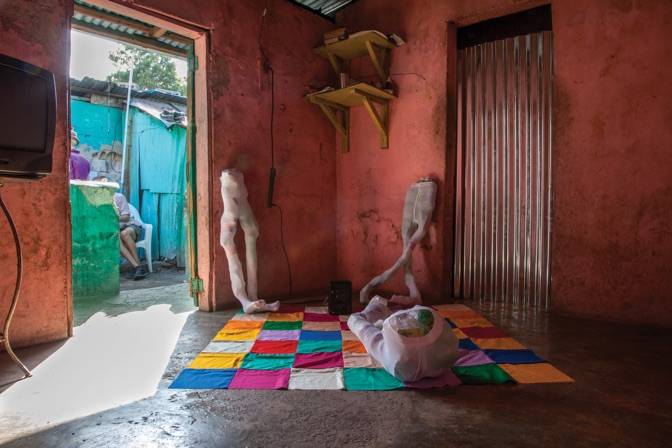

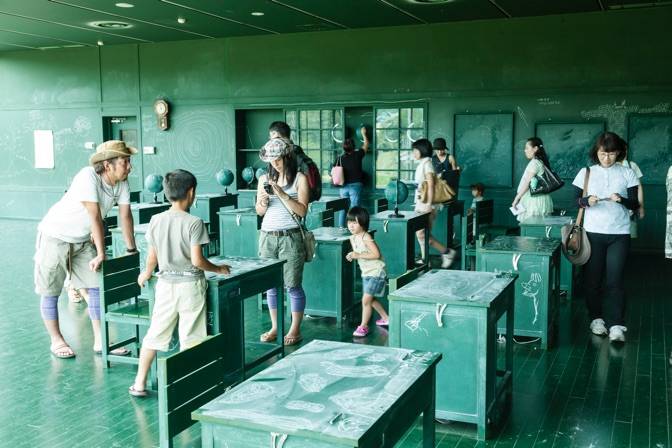
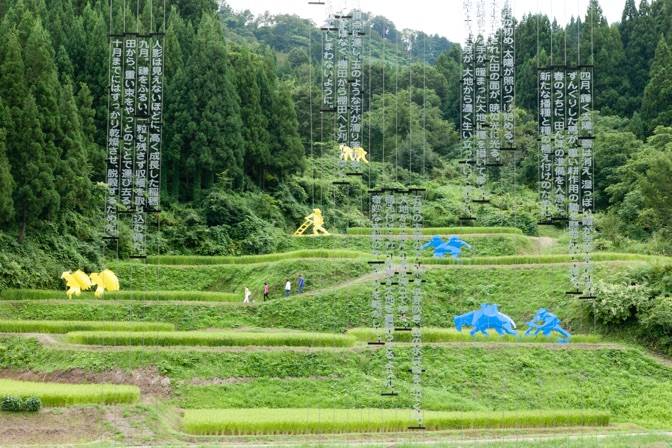
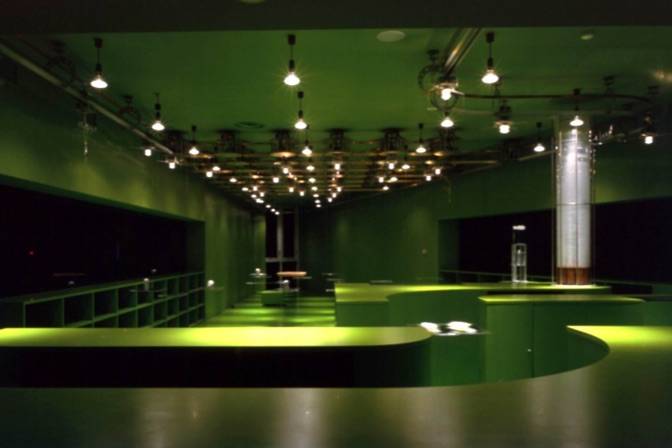
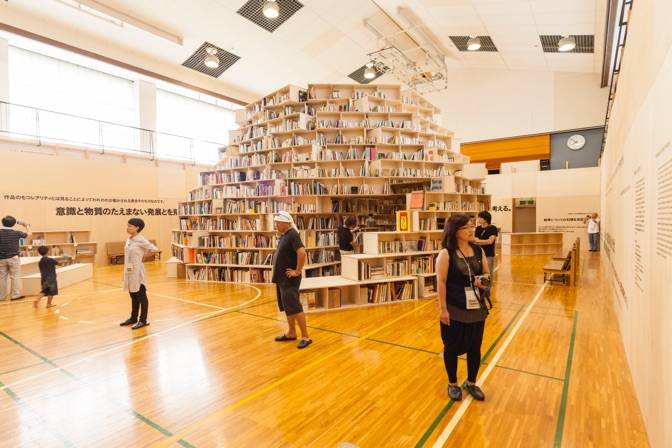
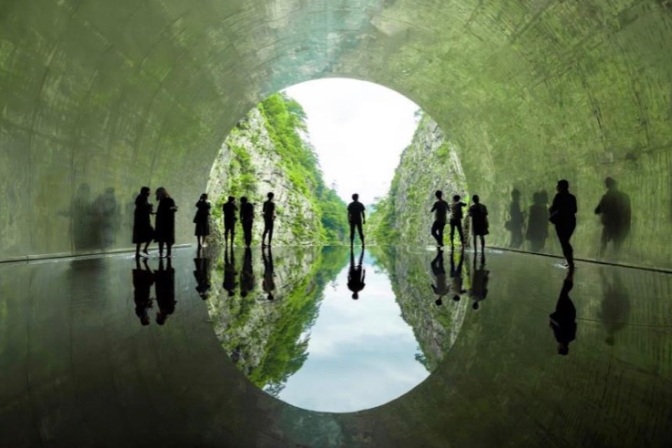
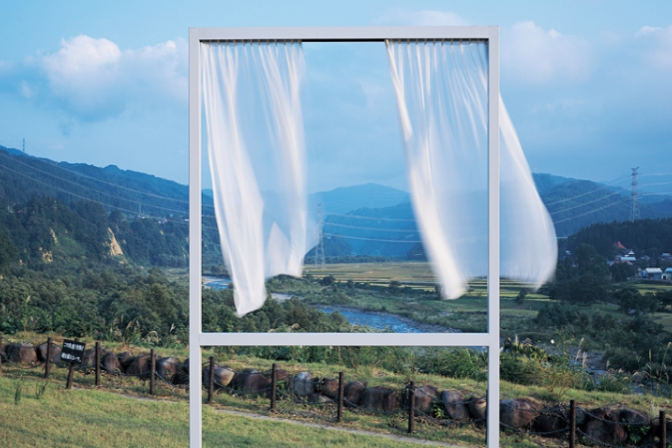
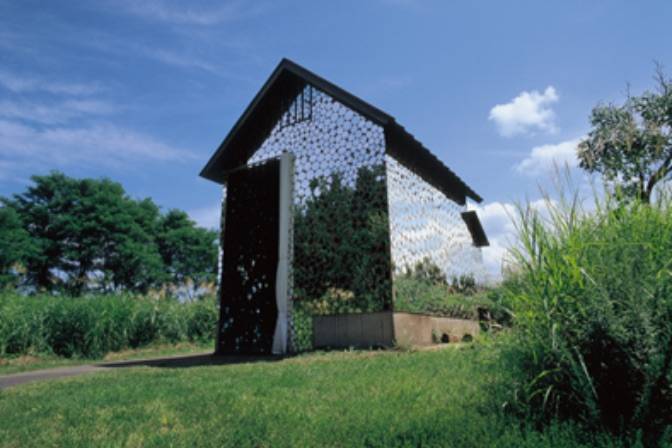
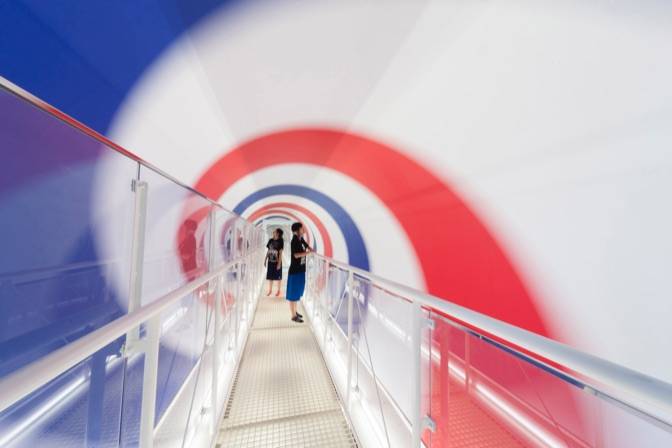

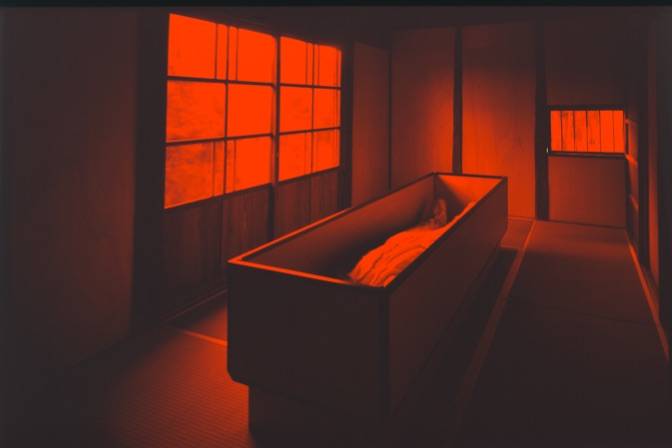
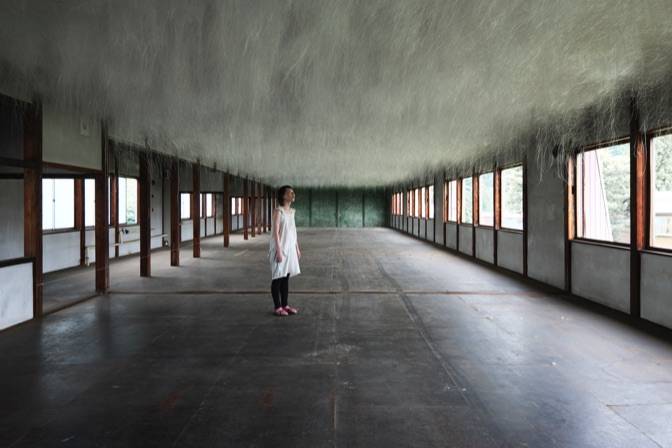

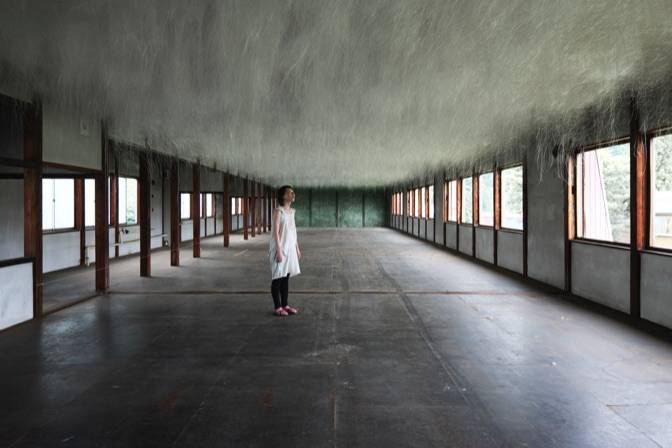
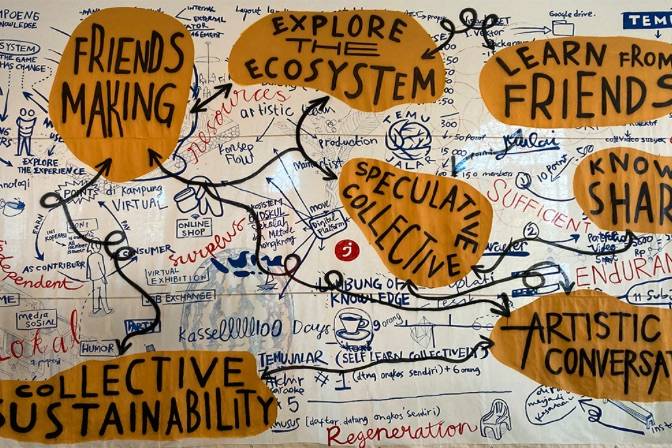
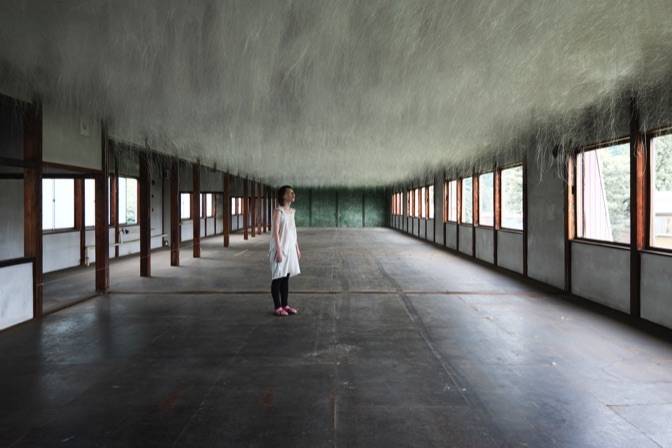
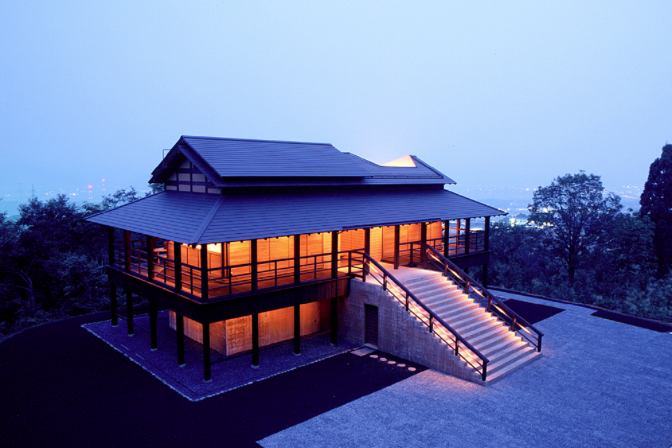
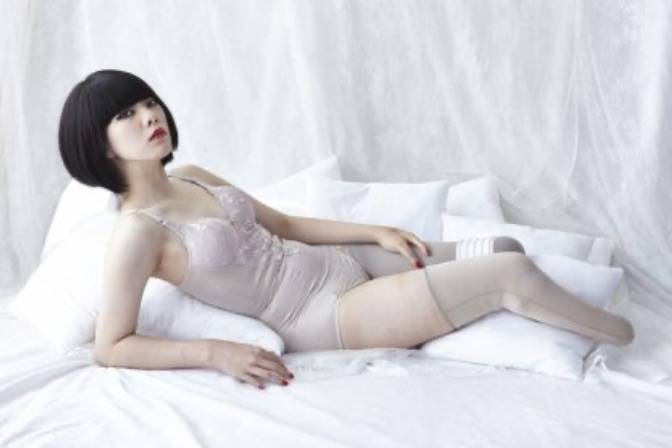
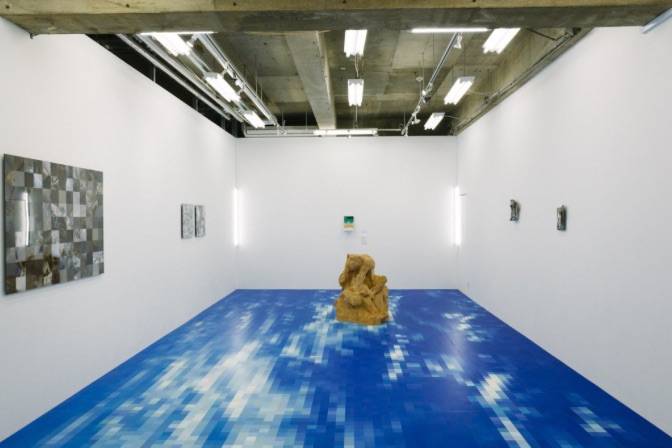
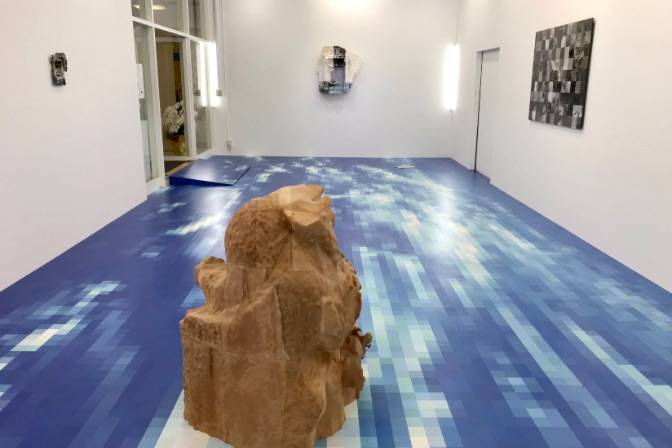

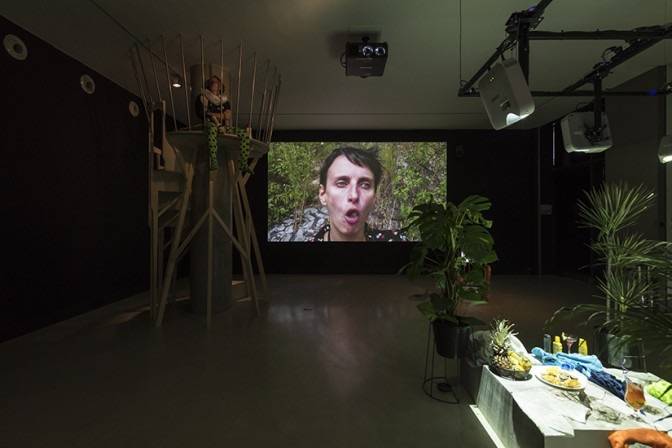
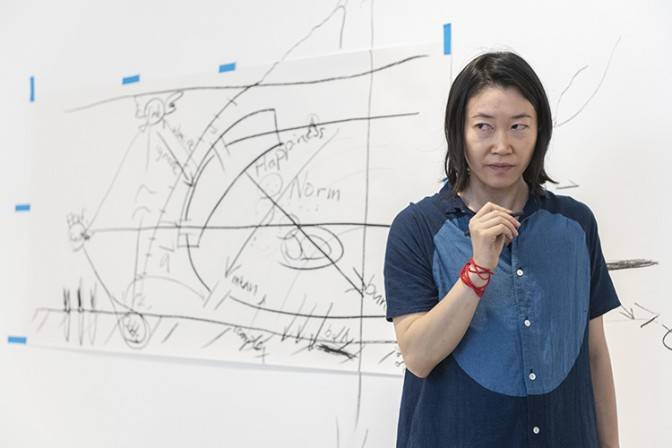
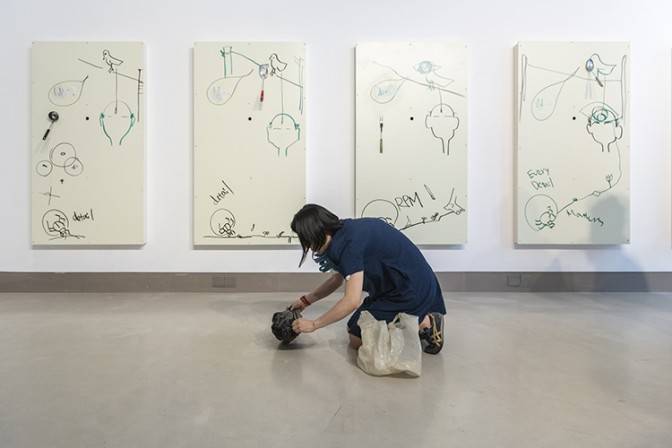
![Moré Moré [Leaky]: The Falling Water Given #5 (detail), 2017 Wood Frame, found objects, water pump system](http://fountain.ws/keithwhittle/wp-content/uploads/slider/cache/84f264f8afb2b5b4c213d30c34b6556b/YukoMohri.04.jpg)
